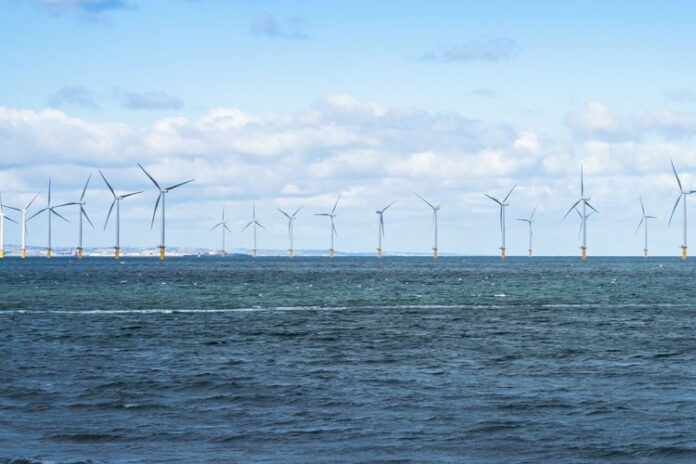ITM Power, the energy storage and clean fuel company, has shared details of a short project sponsored by the Department for Business, Energy & Industrial Strategy (BEIS), in late 2019, entitled ‘Hydrogen supply competition’, ITM Power and Ørsted proposed the following: an electrolyser placed at the wind turbine e.g. in the tower or very near it, directly electrically connected to the DC link in the wind turbine, with appropriate power flow control and water supplied to it. This may represent a better design concept for bulk hydrogen production as opposed to, for instance, remotely located electrolysers at a terminal or platform, away from the wind turbine generator, due to reduced costs and energy losses.
In this scenario, where an electrolyser is placed offshore at the wind turbine, e.g. in the tower or in close vicinity to the wind turbine, energy in the form of hydrogen will be transported to shore by an underwater or underground pipe network. This presents an opportunity to reduce overall costs, as hydrogen pipes cost less per km than power cables. The efficiency of such a system shows potential to define new standards by removing the need for AC rectification.
The concept proposed is:
- A marine environment capable electrolyser
- ‘Type IV’ wind turbine generators and their ‘DC link’ have the potential to power the electrolyser directly
- This enables fewer power conversion steps and thereby reduces both energy losses and electrolyser footprint
- Readily abundant cooling capacity via the sea water
- Energy in the form of Hydrogen gas supplied to shore by pipe rather than via electricity
- Connecting one electrolyser with one turbine wind generator
- Other avoided costs of this concept include permitting, a single process unit deployment
Overall, the concept explores opportunities to minimise the cost of hydrogen production through a combination of improved efficiency and reduced CAPEX. Such a system has not been demonstrated in practice and several challenges will need to be overcome for this vision to be realised. However, the possible cost reductions presented by this concept makes it viable for consideration on future offshore hydrogen installations. Demonstrating the concept would require R&D effort, as well as economic evaluation.
Therefore, areas for future development include:
- Development of an electrolyser module specification suitable for offshore operation
- Pre-build, pre-testing of electrolysers and DC link module at onshore locations
- Prototype design, build, deployment, and testing onshore
- Design exercise for a multi MW-scale solution
- Offshore deployment planning and demonstration
- Operations design including assessment of OPEX costs
- Techno-economic assessment and business case development
To pave the way for a sustainable future with hydrogen and related P2X technologies as the key enablers, the energy system must undergo significant changes at a considerable pace. To achieve fully developed optimal solutions for these required changes will require investment to provide the necessary building blocks.



